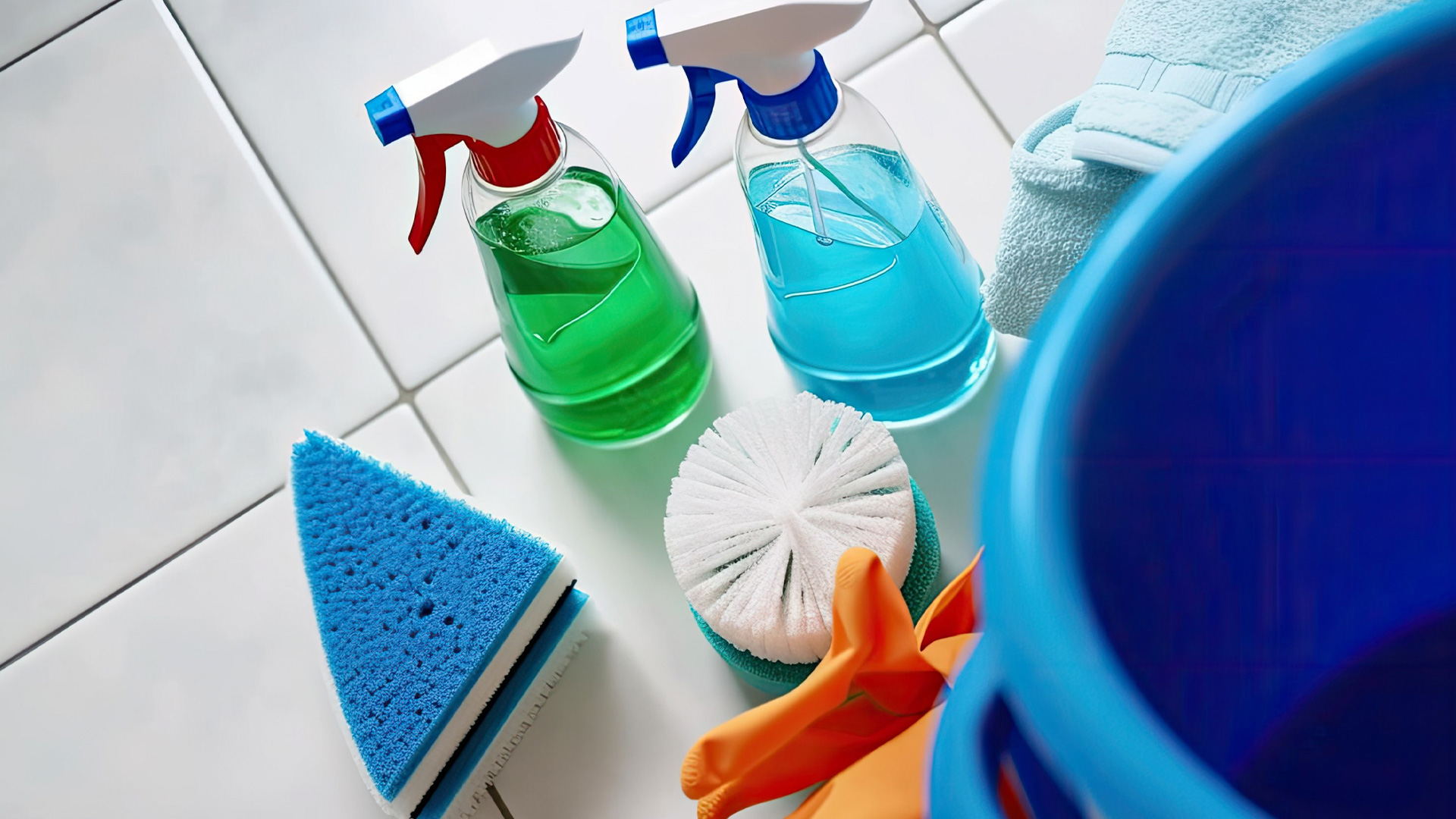Imagine this: You’re finally tackling that stubborn stain on your kitchen floor. You reach for the bleach, the go-to for many tough messes. But hold on! Before you douse your ceramic tile floor with this powerful cleaner, there are some crucial things you need to know.

Image: www.pinterest.com
Bleach is a highly effective disinfectant, but it can also be detrimental if used incorrectly. We’re going to explore the nuances of using bleach on ceramic tile floors – when it’s safe, when it’s not, and how to approach it with caution and care.
Understanding the Benefits and Risks of Bleach on Ceramic Tile
Ceramic tile is a popular flooring material due to its durability, versatility, and ease of cleaning. While it’s generally resistant to stains and bacteria, even ceramic tile can benefit from a good cleaning. Bleach, with its powerful disinfecting properties, seems like an obvious choice. However, it’s not always the answer.
Bleach’s Strengths:
- Disinfection Power: Bleach is a powerful disinfectant that effectively kills bacteria, viruses, and mold. This is particularly useful for cleaning areas prone to contamination, such as kitchens and bathrooms.
- Stain Removal: Bleach can help remove stubborn stains on ceramic tile, especially organic stains like food spills.
- Brightening: Bleach can brighten dingy ceramic tile, making it look newer and cleaner.
Bleach’s Limitations:
- Damage to Grout: Bleach can damage grout over time, causing it to become brittle and discolored. Since grout is porous, it absorbs bleach easily, leading to its degradation.
- Color Fading: Bleach can fade the color of certain ceramic tiles, especially those with delicate glazes or natural stone elements.
- Harmful Chemical: Bleach fumes can be harmful to humans and pets, so it’s crucial to use it in a well-ventilated area and with appropriate safeguards.
When Bleach is a Good Choice
While bleach is widely used for cleaning, it’s not always the best solution for ceramic tile floors. Here’s when it’s suitable:
- Mildew and Mold Removal: Bleach is effective at eliminating mildew and mold, which are common issues in humid environments like bathrooms.
- Deep Cleaning: If you’re facing persistent dirt, grime, or grease that other cleaners haven’t addressed, bleach might be your best bet for a deep clean.
- Disinfection: When you need to disinfect a high-traffic area like a kitchen or playroom, bleach can help eliminate germs and bacteria.
When to Avoid Bleach
Bleach can damage your tile floor if used carelessly. Here are some situations where it’s best to steer clear:
- Newly Installed Tile: Don’t use bleach on newly installed ceramic tile, as it can damage the sealant and potentially weaken the grout. Wait at least a few weeks before applying bleach.
- Delicate Glazes: Some ceramic tiles have delicate glazes that can be easily damaged by bleach. Test an inconspicuous area before applying bleach to the entire floor.
- Natural Stone Tiles: Natural stone tiles like marble and granite are porous and susceptible to etching from bleach. They require specialized cleaning agents that are less harsh.

Image: www.tilingadvice.co.uk
Safe Strategies for Using Bleach on Ceramic Tile
If you decide to use bleach on your ceramic tile floors, follow these critical steps to ensure safety and minimize damage:
- Dilute It: Don’t use bleach straight from the bottle! Always dilute it with water. A general rule of thumb is to mix one part bleach with ten parts water.
- Test It: Before applying bleach to the entire floor, test it on an inconspicuous area. Observe the tile’s reaction for a few hours to ensure it doesn’t fade or become damaged.
- Ventilate the Area: Open windows and doors to ensure good ventilation while using bleach to prevent harmful fumes from accumulating.
- Protect Yourself: Wear gloves and protective eyewear when using bleach. Avoid contact with skin and eyes.
- Rinse Thoroughly: After cleaning, rinse the floor thoroughly with clean water to remove any bleach residue. Bleach residue can react with other cleaning agents and create harmful fumes.
- Use a Mop, Not a Scrub Brush: A mop is gentler on the tile surface than a scrub brush, making it the ideal tool for applying bleach.
Alternative Cleaning Solutions
Before reaching for bleach, consider these safer and more effective alternatives for cleaning ceramic tile floors:
- Vinegar: White vinegar is an excellent natural cleaner and disinfectant. It effectively cuts through grease and grime without damaging the grout.
- Baking Soda: Baking soda is a gentle abrasive that can help scrub away stains and dirt. Combine it with water to create a paste.
- Dish Soap: Dish soap is a powerful degreaser that can effectively clean ceramic tile.
- Commercial Tile and Grout Cleaner: Many commercial cleaners are specifically designed for ceramic tile and grout, offering safe and effective cleaning for your floor.
Expert Insights and Actionable Tips
To get the best results when cleaning your ceramic tile floors, consider these expert tips:
- Regular Maintenance: Prevent deep stains by wiping up spills promptly, and sweep or vacuum regularly to remove loose dirt and debris.
- Deep Cleaning: Schedule a deep clean of your tile floors at least once a month. This will prevent dirt and grime from building up and making deep cleaning more challenging.
- Professional Cleaning: If you have particularly stubborn stains or want to preserve the life of your tile floors, consider professional cleaning services.
Can You Use Bleach On Ceramic Tile Floors
Conclusion
Bleach can be a useful tool for cleaning ceramic tile floors, but it’s critical to use it responsibly. By understanding its benefits and risks, following safe strategies, and considering alternative cleaning solutions, you can ensure that your ceramic tile floors are clean and healthy for years to come. Remember, a little prevention goes a long way – regular maintenance and proper cleaning methods will keep your tile floors looking their best for years to come! Now that you’re armed with this knowledge, go forth and clean your ceramic tile floors with confidence and care!






